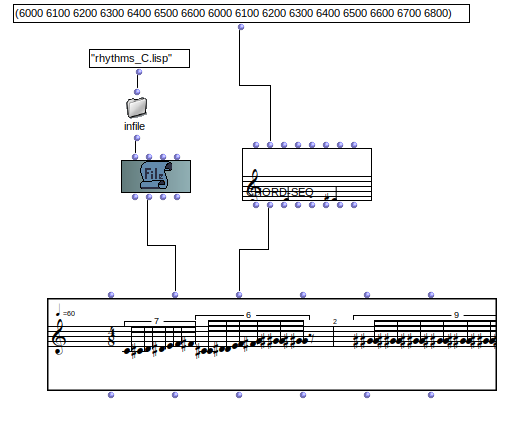Hi Jaros,
[i have tested this on linux (om vers. 6.9.1b).]
First of all you should not use ratios in a tree. This could be a source of problem :
OM => (? (((4 8) ((2 (1/2 1/2 1/2 1/2 1/2 1/2 1/2)) (1 (1/4 1/4 1/4 1/4 1/4 1/4)) -1)) ((4 8) ((2 (1/4 1/4 1/4 1/4 1/4 1/4 1/4 1/4 1/4)) -1 -1))))
OM > Warning zero is not allowed in rhythm tree -> 0
Try to substitute it with this tree (same rhythm):
(? (((4 8) ((2 (1 1 1 1 1 1 1)) (1 (1 1 1 1 1 1)) -1)) ((4 8) ((2 (1 1 1 1 1 1 1 1 1)) -1 -1))))
Concerning no the repeated notes, this is simple. It is the method imbeded in voice, since you have less notes than pulses, voice will decide to repeat the last chord till the pulses are finished. If you need to change it or do something circular, yuo should repeat your chord series according to the num of pulses that you can have using n-pulses method.
Hope this answers your question.
Best wishes
K


